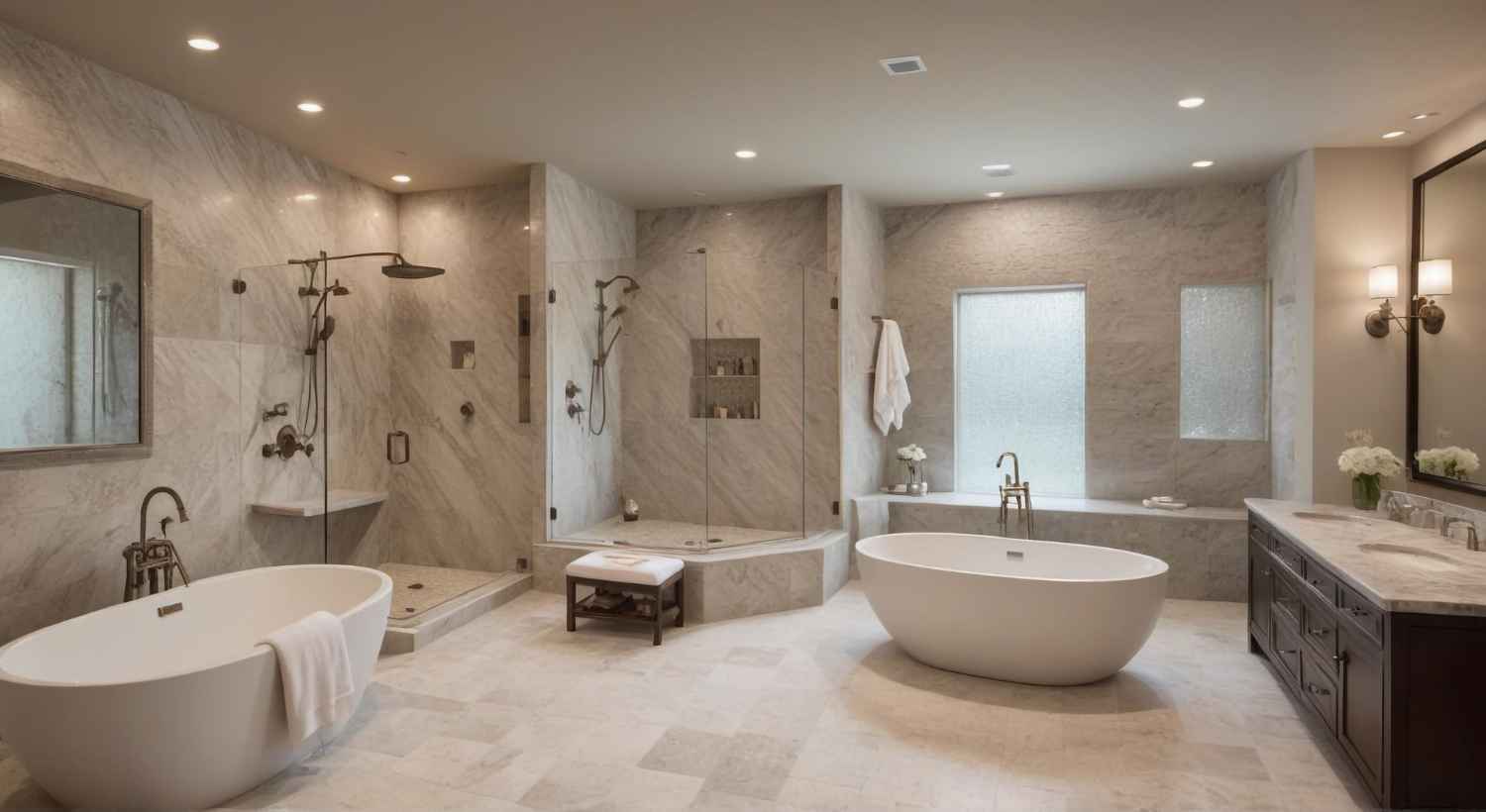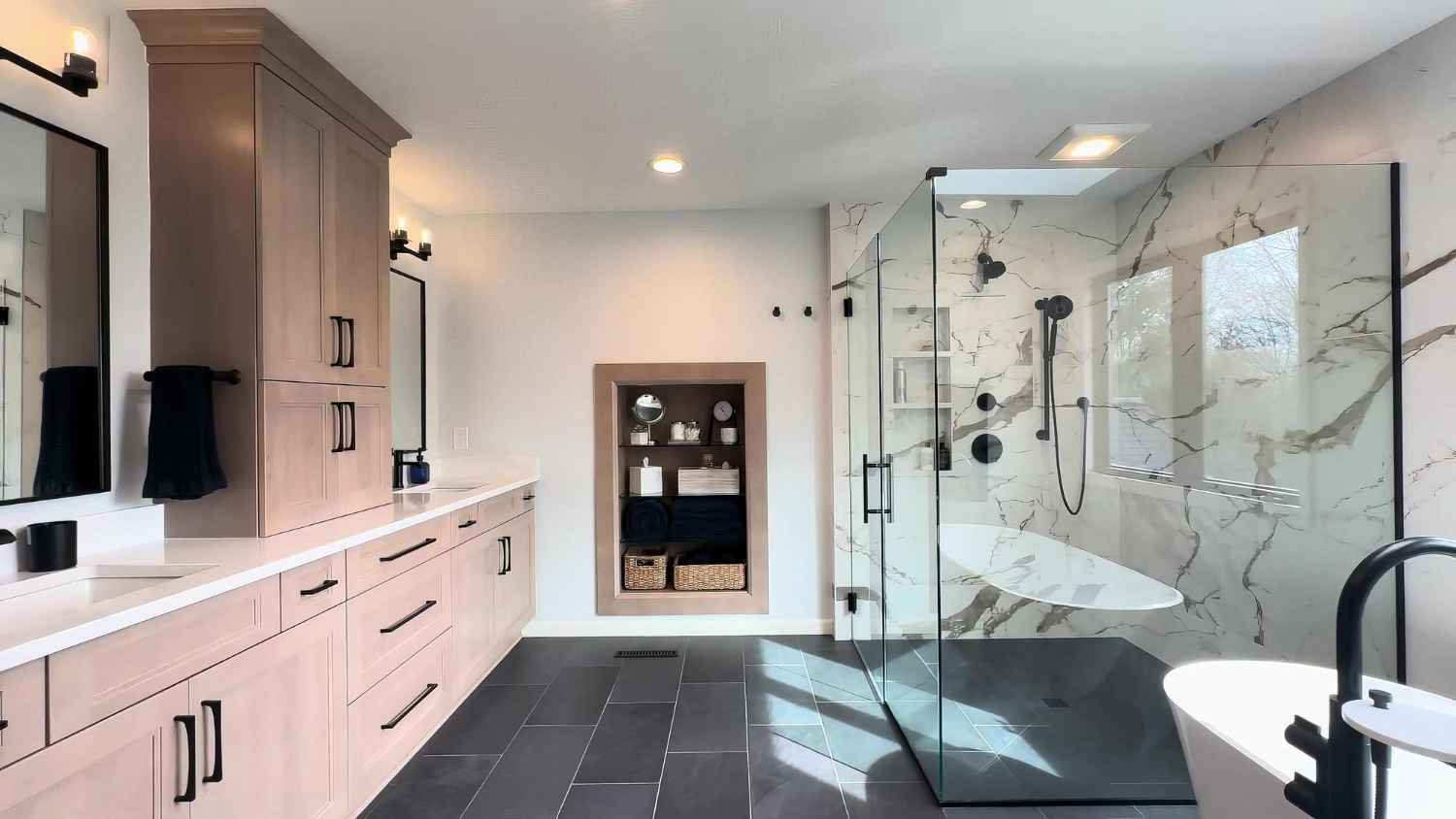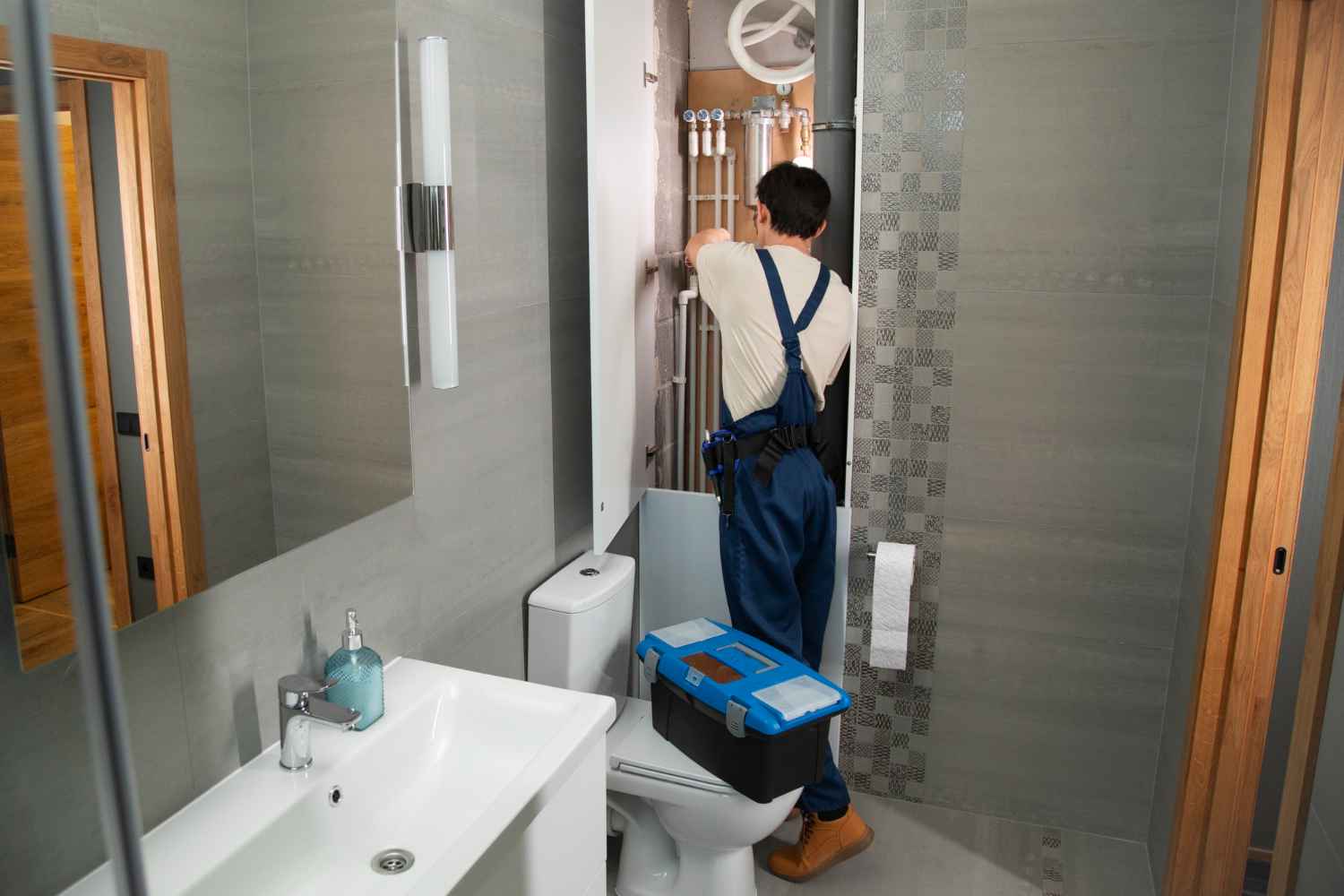The bathroom is one of the most frequently used rooms in a house, requiring constant care, maintenance, and upgrades for enhanced comfort and luxury. While bathroom renovation projects are tempting, they can be daunting and time-consuming.
According to Victoria Plum, a bathroom specialist, completing an ordinary bathroom typically takes around one to six weeks. The timeline depends on several factors, including:
- Who is doing the fitting
- Planning the installation
- The scale of the project
- Choosing the accessories
- Execution
- Given complexities
Understanding the intricacies of this arduous task is essential to ensure your project is completed within the given timeframe. Whether you’re installing a new bathroom or replacing an old one, this article will guide you through the fitting process. It will explain the factors affecting the timeline, discuss common problems encountered during bathroom installations, and offer tips for planning your bathroom effectively.

Bathroom Renovation Timeline
Choosing the Contractors
Bathroom renovation projects are usually executed in one of the following ways, or a combination:
- Hiring a Fitting Company: Engaging a professional company can expedite the process compared to hiring individual tradespeople, though it tends to be more expensive. Typically, a fitting company might complete the installation in 1-3 weeks.
- Hiring Tradespeople: This option is less expensive than hiring a company and faster than doing it yourself. However, it requires some basic understanding, such as:
- Ensuring the reliability and qualifications of the tradespeople.
- Understanding the scope of work and providing necessary guidance.
- Maintaining regular communication and project management.
- Addressing any issues that arise during the process.
- Do-It-Yourself (DIY): If you choose to fit or renovate your bathroom yourself, it may take longer compared to hiring professionals. The timeline for DIY projects can extend up to six weeks, depending on your skills and understanding of bathroom fitting work.
Planning and Designing
This is a crucial step in the bathroom fitting process, involving the selection of accessories, gathering inspiration, brainstorming ideas, and determining the scope of renovation required.
There are two primary types of bathroom fitting processes:
Starting from Scratch: This involves a comprehensive process of completely demolishing the existing space and beginning anew. It includes:
- Removing the sink, toilet, shower/bath, and tiles
- Installing new pipes
- First-fix electrics
- Replastering walls
- Laying new flooring
- Installing a new sink, toilet, and shower/bath
- Tiling the walls (time depends on tile size; larger tiles mean a faster job)
This type of installation can take up to six weeks.
Fixture Replacement or Cosmetic Changes: This involves replacing fixtures or making cosmetic changes, making the installation relatively quick and straightforward. It includes:
- Removing existing bathroom features
- Plumbing adjustments
- Electrical rewiring if necessary
- Replastering
- Tiling floors and walls
- Painting
This is less time-consuming process and can be completed within a few hours or days depending on the project scale.

Factors Influencing This Stage:
- Complexity: The complexity of the project significantly affects the installation time. A simple renovation to refresh the bathroom’s look typically takes less time than a complete redesign.
- Availability of Accessories and Materials: The availability of materials, fixtures, and accessories can impact the timeline. If these items are readily available, the installation process can proceed without delays.
- Bathroom Size: The size of the bathroom also plays a significant role. Smaller bathrooms generally require less time for fitting or renovation compared to larger ones.
For an accurate estimate of your installation time, it is advisable to consult with a specialist or professional contractor, such as A M Property Renovations, who can provide a precise assessment and assist in planning the project.
Execution
Dismantling and Clearing the Bathroom:
- Timeline: 1-2 Days
The initial step involves removing old tiles, furniture, sink, shower, bathtub, toilet, and rubbish. DIY efforts typically take 1-2 days, while professionals can complete this in one day for a standard bathroom (2.3m x 2.7m).
Plumbing:
- Timeline: 2-3 Days
This stage involves replacing old pipes and potentially rerouting plumbing for layout changes. Professionals can accomplish this complex task in 2-3 days on average, ensuring the new plumbing is thoroughly tested before wall plastering.
Wall Preparation and Smoothing:
- Timeline: 2-4 Days
Following the pipework, the walls are straightened and plastered. While Dry lining takes 1-2 days, plastering takes 2-3 days, with additional drying time needed.
Flooring:
- Timeline: 2-3 Days
Flooring significantly enhances the appearance of the bathroom. Unlike DIY projects that require careful planning and an extended time period, professionals can complete the installation in 2-3 days, depending on the room size. Post-installation cleaning is done to achieve a polished look.
Grouting, Secondary Plumbing, and Electrical Finishes:
- Timeline: 1 Day
After tiling, professionals spend one day grouting and applying silicone. The next day is dedicated to connecting sinks, basins, bathtubs, and completing drainage. Electrical work, such as installing lighting and switches, typically takes half a day to complete.
Structural Work:
- Timeline: 2-3 Days
For structural changes, each phase is allocated specific timeframes: 1-2 days for carpentry, another 1-2 days for setting plumbing, and 1-2 days for electrical rough-ins. Gyprock sheeting also takes 1-2 days. This is followed by screeding for tiling, which requires an additional 24-48 hours to dry.

Common Problems Causing Project Delay
Bathroom installations often encounter delays due to a variety of issues that are frequently underestimated during the planning phase or emerge unexpectedly. Key considerations include:
- Inadequate Planning: Insufficient preparation and foresight during the initial stages of the project can lead to significant delays.
- Substandard Workmanship: The quality of craftsmanship and execution during installation may fall below acceptable standards, causing setbacks.
- Limited Availability of Accessories and Materials: Delays can occur due to challenges in procuring necessary components and materials.
- Incorrect Measurements: Errors in dimensions and specifications during both planning and execution can lead to costly and time-consuming corrections.
- Poorly Conceived Layout: Flaws in the design and arrangement of bathroom elements can disrupt the workflow and necessitate redesigns.
If you are planning to undertake a bathroom renovation project, consult the experts at A M Renovations and experience the difference!
